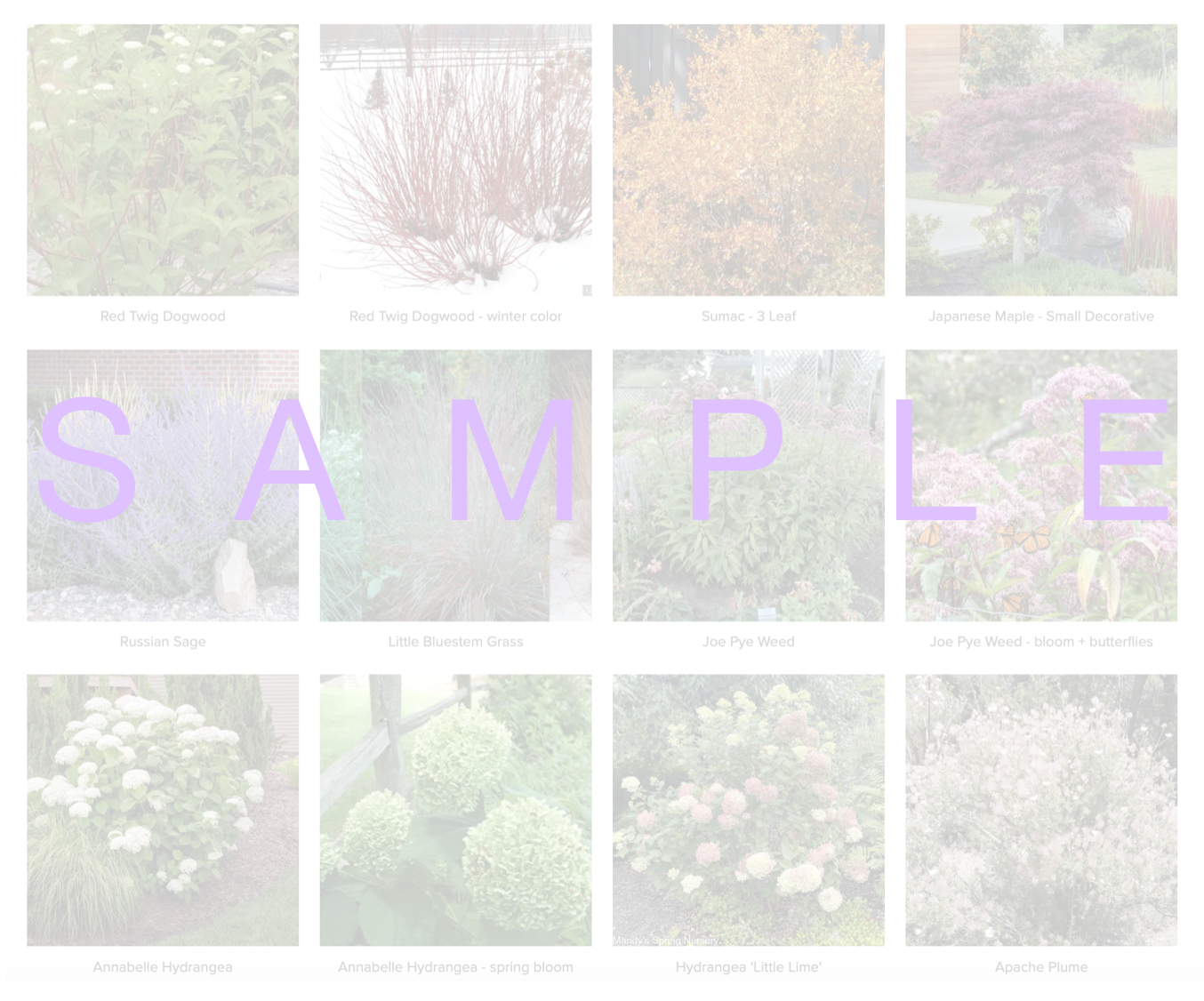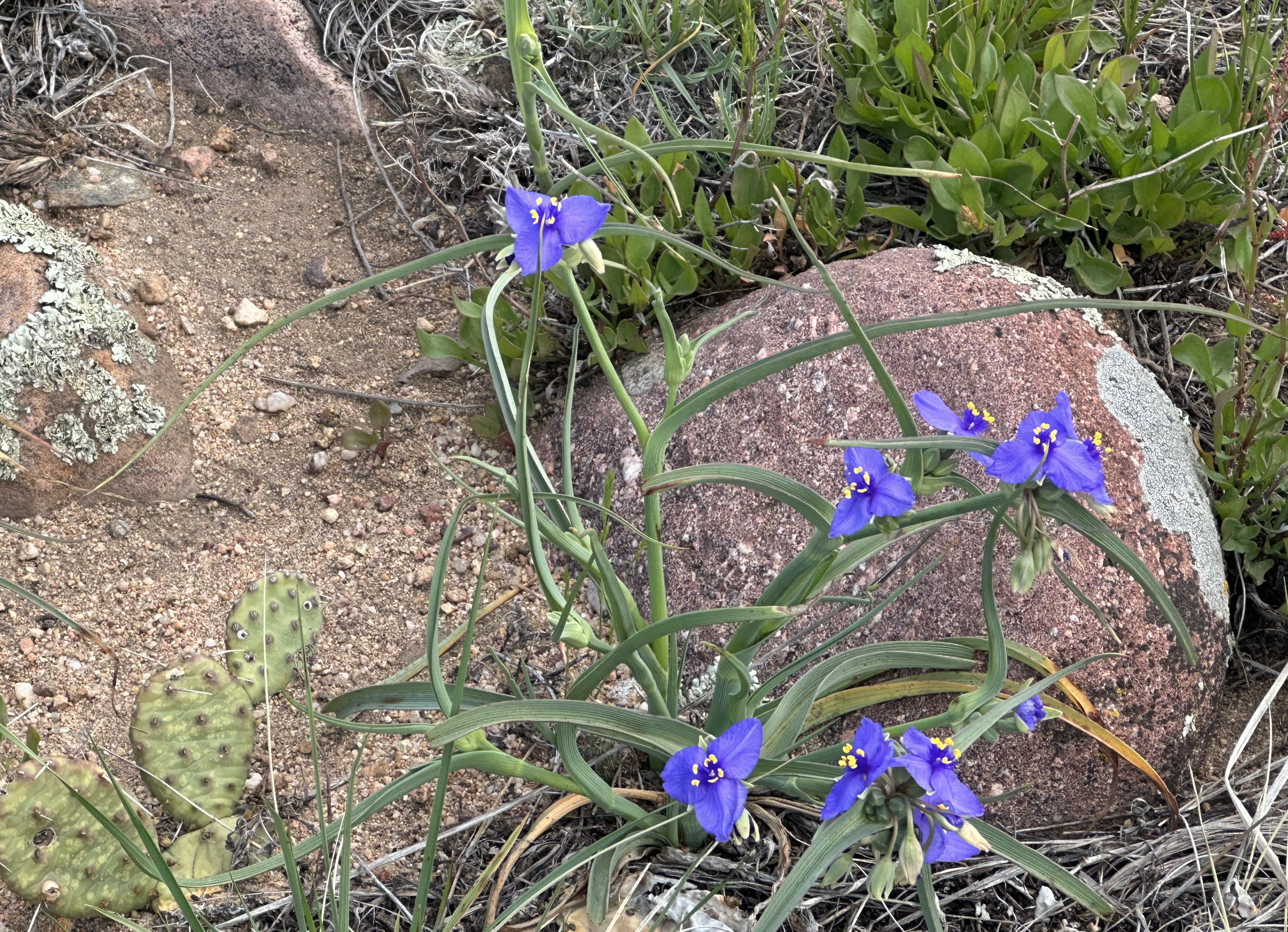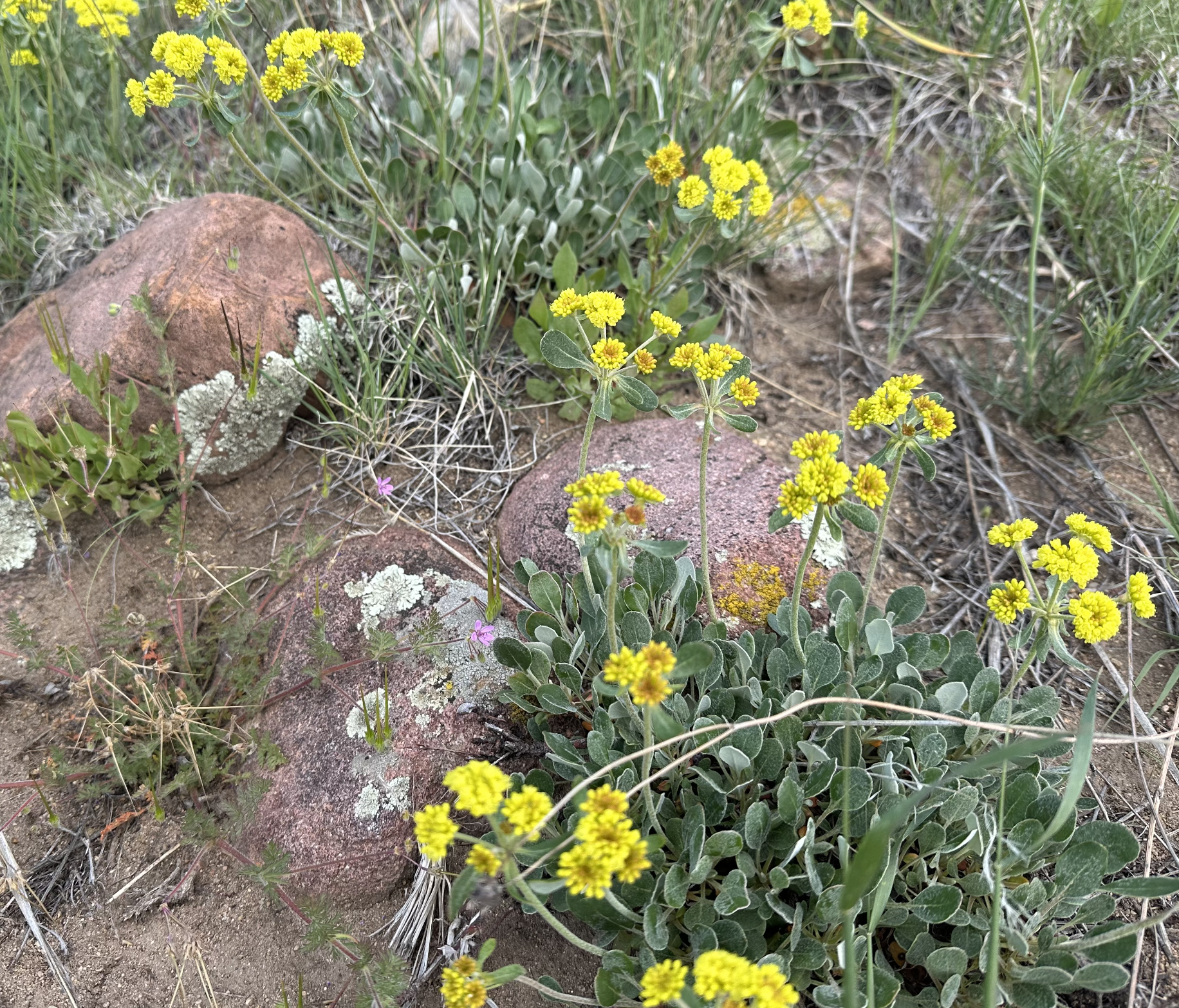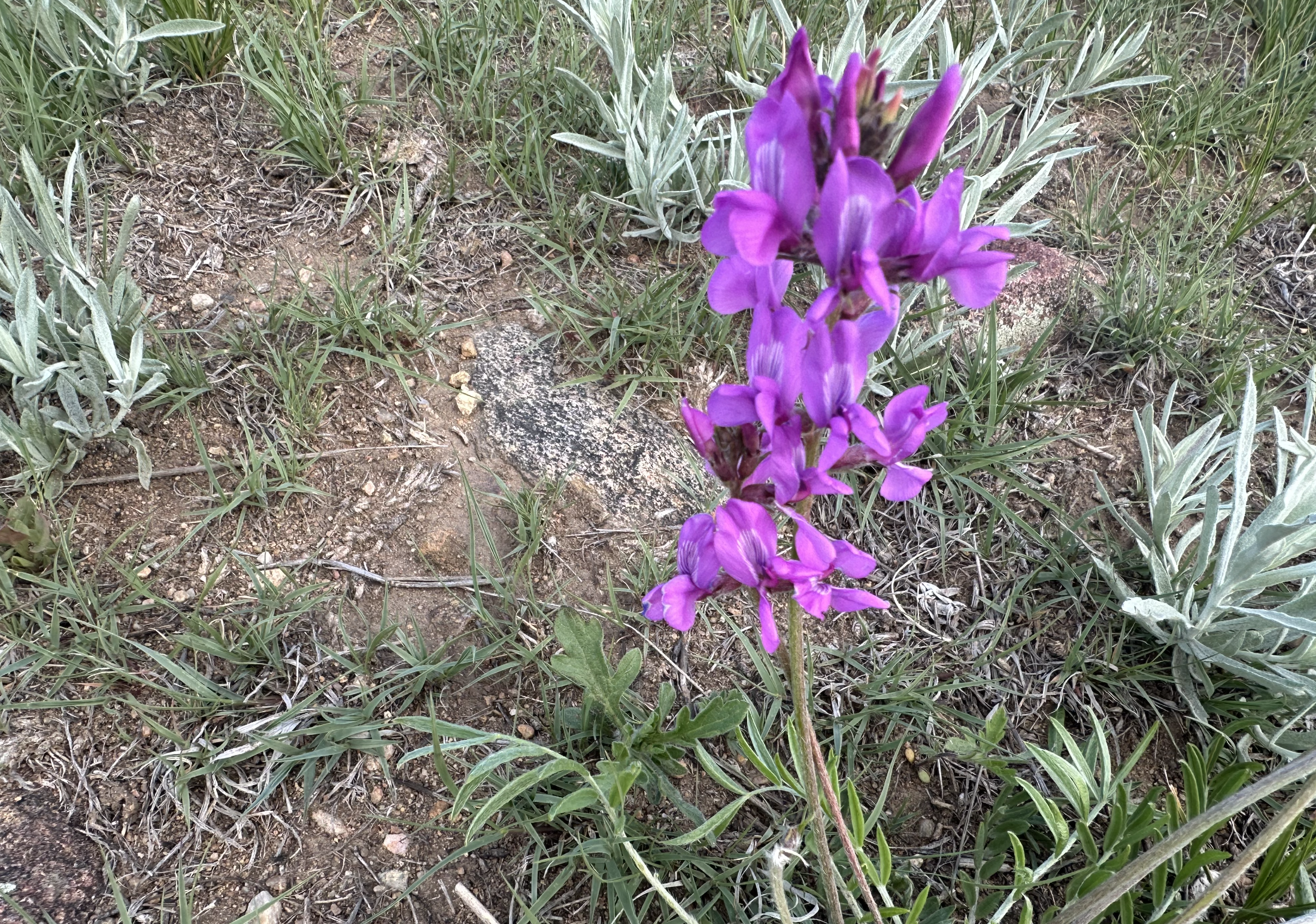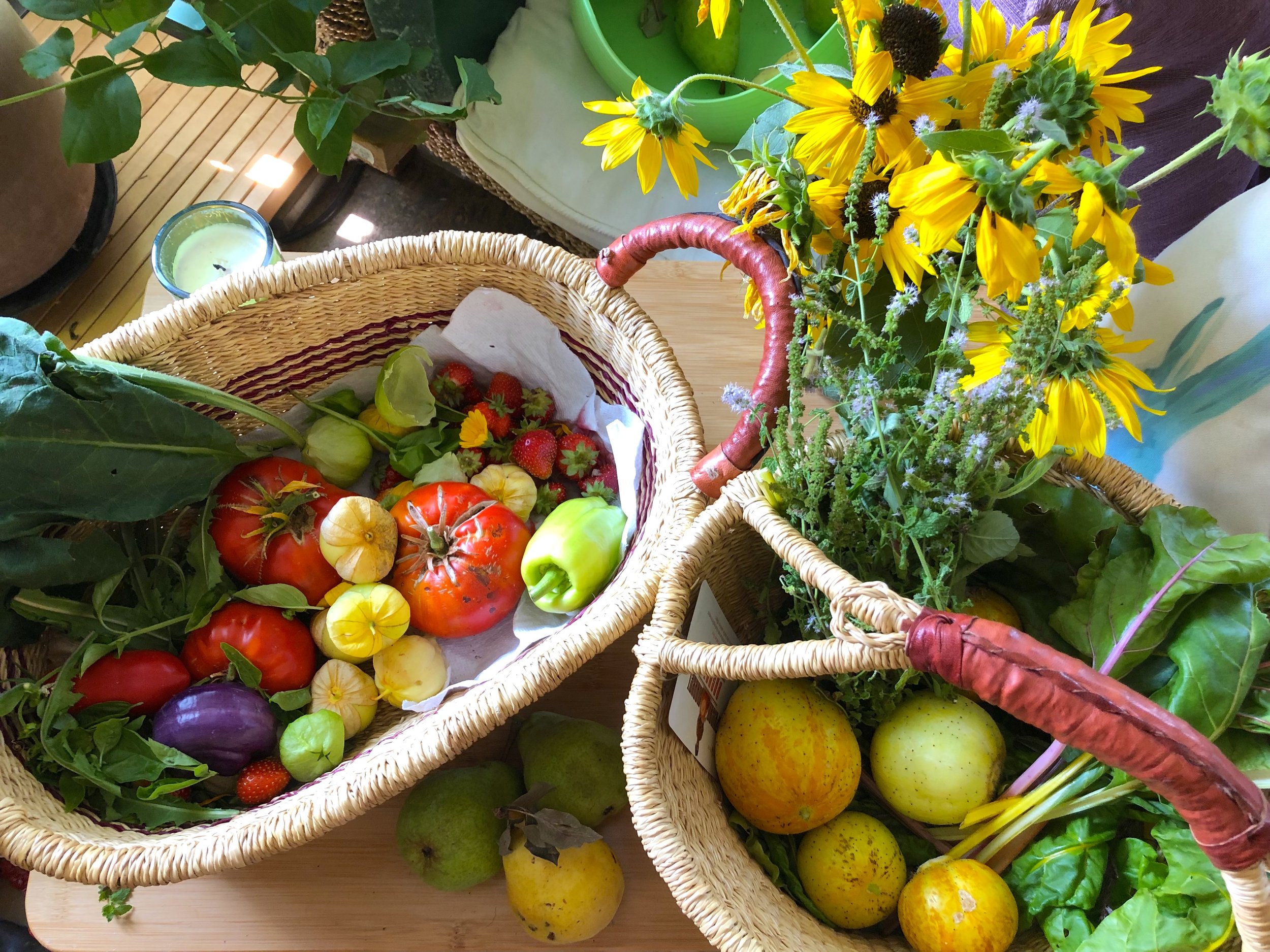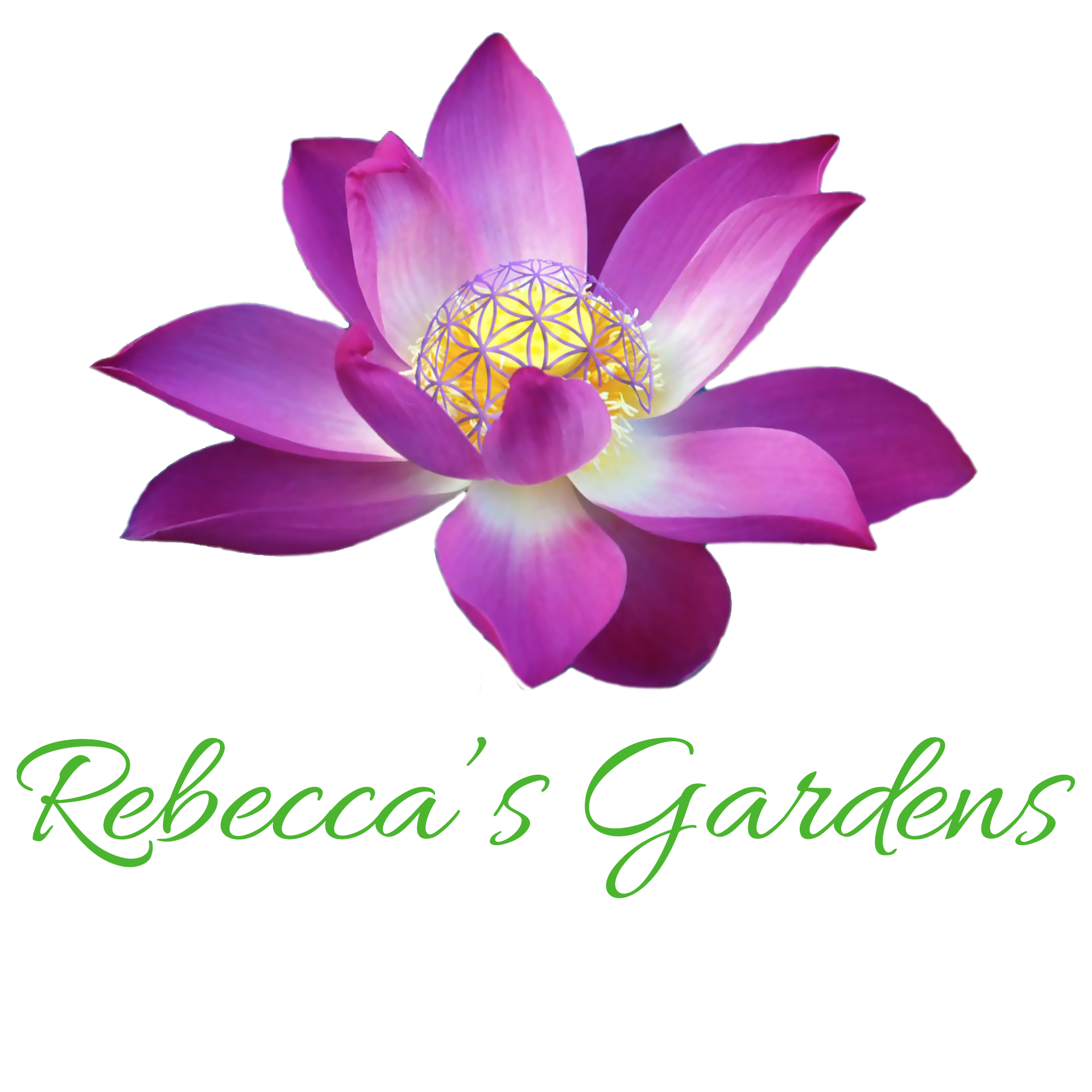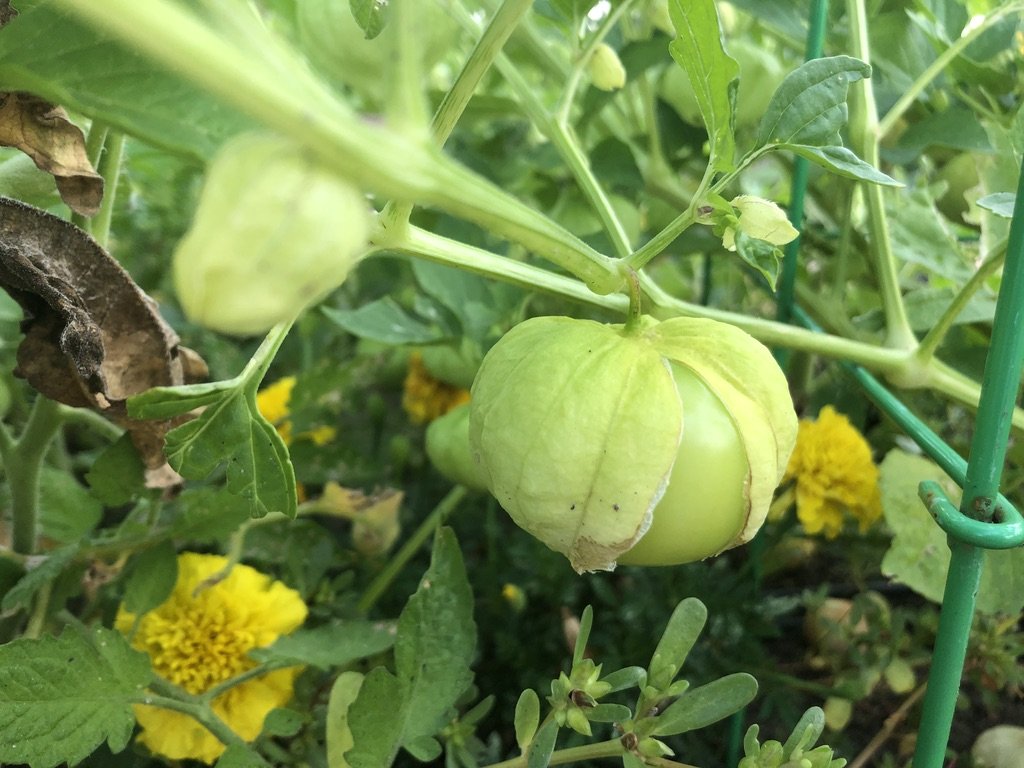Rebecca Invites You To Garden Better
STEP BY STEP ON SITE WITH A PRO
FOR GO-TO HANDS-ON GUIDED MAINTENANCE SESSIONS
DIY MONTHLY ONLINE TIPS BY TOPIC
FOR MONTHLY EMAIL TIPS + FREE ONLINE ACCESS TO TOPICS OF CHOICE
ECO GARDEN CARE
$360 for 3 Sessions, 1.5-2h each — Live In Person
Schedule: Every Other Week, or Flexible As-Needed over any 6 week period April through Dec, weather allowing.
“Garden Together + Better Your Garden Game”
Book Your GARDEN CARE With Rebecca Here:
• Get Assistance With The Physical Labor —- While Enjoying Gardening Together
• Get Professional + Detailed Wisdom — Plant Species, Soil, Ecology, DIY + more
• Get Sustainable Options — Save money + meet your goals + the environment
• Get An Experienced Approach + Troubleshooting — how to DIY + do better
Learn conversationally while you follow Rebecca’s collaborative-style guidance where you pick up what to do with ‘muscle memory’. Ask your questions and get more than information…. discover a new perspective and enjoy your garden more! Be efficient and discover exactly what’s needed for your garden to stay in constant balance each month throughout the season… while you save on budget, energy, effort, and attention.
DIY GARDEN CLUB
$33/mo Get Started with Rebecca’s Guidance
• Use Tips Right From Your Email Inbox
• Dive Deeper with Topics of Choice in Our Online Course Library
Receive A Monthly Topical Email with Link To Your Membership Access Featuring Choice Content On Our Website
“Get On-Call Garden Tips By Text — By Request Right When You Need Them!”
FREE
WITH YOUR MONTHLY GARDEN CLUB MEMBERSHIP
Book Your GARDEN CLUB Membership Here:
GARDEN CLUB GIVES YOU ‘GOOD DIRT’
• LEARN TO CARE FOR + ENGAGE YOUR GARDEN
• BEGINNER — INTERMEDIATE — ADVANCED LEVELS
• ANSWERS TO YOUR QUESTIONS
• LEARN TECHNIQUES + COMMON OR CREATIVE SOLUTIONS
• SUPPLEMENTAL INDUSTRY LEADING 3RD PARTY CURATED CONTENT
• 6 months of Good ‘Dirt’ on DIY Gardening
• Garden Club is a monthly email + online subscription for you to receive new and supplemental gardening and landscaping guidance and seasonal topics with a focus on DIY
• You will receive a monthly email with a link to related topics, featured on our website and/or other social media platforms.
• DIY Topics may be able to be directly implemented with your DIY approach, and can also be used as a supplement to in-person GARDEN CARE, one-one-one sessions— scheduled and hosted in person with Rebecca
• The subscription is active until either the subscription period (6 mos) runs out or you choose to cancel.
• Automatic monthly payments will be deducted from the card you pay with.
• We respect your privacy (like our own!) and will not sell, spam, or otherwise share your info without your permission
• • • • • • • • • F A Q’s • • • • • • • • •
What Content Does A Garden Care Session Cover? *for example
• Perennial Gardens
• Soil — how to plant for existing conditions vs when and how to amend
• Plant Selection — Best strategy + species recommendations
• Maintenance — How-To for Your Installation or Existing Garden (any level)
• Xeriscape / Low Water — How to Prep, Install, or Maintain Low Water plantings
• Irrigation — Current and best practices (always ask your service professional)
• Vegetable Gardens
• Herbs and/or Medicinal Plants
• Native Plants — pollinators, and purposeful placements
• Permaculture — Principles Applied To Your Yard
• Plant Guilds — Connecting your ecology
• Forest Gardening — Layers of Economic Exchange in the Plant World
What Content Does GARDEN CLUB Membership Include? *for example
Monthly Topics 2025-26 Season (topics may be subject to change / based on your interest/request)
• MAY — DIY Hands-on Maintenance (seasonal clean up) and Soil Structure in preparation for planting
• JUN — Plant Selection and the importance of the elements in different micro-climates of the yard
• JUL — Bloom time and potential transplants or seasonal additions
• AUG — Creative side projects, custom solutions, or whimsical additions that bring your garden ‘together’ for your satisfaction
• SEP— Outlining a Garden Plan by season as a custom ‘users manual’ that you, your family, or anyone else you hire to help can refer to or use, for proper care.
• OCT — What to cut back, when, and what to leave over winter for the birds, bees, and pollinating insects that keep our eco system healthy
• NOV — Fall Maintenance Hacks; Save Your Leaves + Save Your Pollinators; What to keep wild for bird + pollinator food + habitat over winter; Fall Plant Picks
• DEC — How To Put Your Garden To Bed For the Winter; DIY Holiday Garden Gifts; Winter Plant Picks
2026
• JAN — Winter Watering suggestions, schedule + How to know if you got enough snowmelt; What birdseed to feed (or not)
• FEB — Hot Design Ideas for Spring While You’re Inside From The Cold; Benefits to planning your spring garden
• MAR — DIY Spring Clean Up; DIY Seed Picks + How To Start Your Seed Starts indoors;
• APR — Where to find local Plant Starts; How to transition from winter to spring for perennials; Where to start with your veggie gardens this season
etc…TBD
WANT MORE DETAIL? LET’S DIVE IN…
HERE ARE 6 TOPICS WE MAY COVER IN GARDEN CARE OR CLUB:
Top 6 DIY Tips
1) SOIL when to work with or amend colorado soil
2) PLANTS sun, shade, xeric, adapted, pollinators
3) GROWING you plant… now here’s how you GROW
4) LAYERING + GUILDS essential eco-connections
5) REWILDING where to go native in your landscape
6) LOCAL VENDORS essential socio-eco connections
How’s Your Soil?
THE HEALTH OF YOUR PLANTS IS FIRST AND FOREMOST ABOUT THE HEALTH OF YOUR SOIL
COLORADO SOIL STRUCTURE + AMENDMENTS
WELCOME TO COLORADO: A HIGH ALPINE DESERT
The “high alpine desert” (high and dry) zone of our Colorado front range means that the soil here is typically a rocky compacted clay, deficient in nitrogen or other nutrients. The soil here has a high “alkaline” pH of 7.0 - 8.3, due to the high amount of calcium carbonate (free lime), a reflection of limited rainfall and rock weathering.
To adjust for this, here are the elements we can easily add to this soil to make it more hospitable and to support your garden’s beauty and bounty.
While many native plants prefer less amendment, in other garden situations your soil will greatly benefit by the right help to support the ecosystem you’re planning. Here you’ll learn what to do when choosing to amend your soil.
START HERE + BRING YOUR SOIL TO LIFE
In perennial beds, after spring clean up, and before adding seeds or starts, it is highly recommend to:
1) OPTIONALLY Aerate or till the existing soil. By adequately loosening up and amending the soil, you are helping to create a more suitable environment for the plants that live there. Water and Air can move more easily through the substrate for better drainage, encouraging microorganisms to cultivate healthy root systems, which are able to transport available nutrients where needed.
In wild or more native gardens, nature’s symbiotic balance is best left as undisturbed as possible, or when growing vegetables or crops it can be difficult to apply a no-till practice such as this, so amending is a suitable alternative.
BALANCE YOUR SOIL STRUCTURE WITH THESE ELEMENTS
2) Add a moisture-retaining element such as rice hulls, pearlite, or vermiculite (expanded shale). If you want to support a local reseller, these are available at McGuckins. The volume needed will depend on your square footage as well as any unique microclimate influences of note.
The gardener’s goal here is to create a loamy soil strucure (an equal balance of sand/silt/clay). We’re going for the “goldilock’s zone” of not too heavy, not too light, but just right, with good moisture retention. Here’s how to identify what general soil type you may be working with and how to balance it:
→ DENSE DIRT OR CLAY Most of the Front Range of CO has dense or clay dirt masquerading as soil. So, if you soil is overly dense, compacted, or has a high clay content, you’ll want to lighten it up. For this, you can use rice hulls, pearlite, and/or vermiculite. These elements act to retain moisture by wicking and dispersing, making it available to the roots in a more even distribution over a longer period. Coconut coir and spanghum moss also provide a lighter weight to the surrounding soil media thus aerating and lifting the density.
→ SANDY SOIL If your soil is too sandy or dry dusty silt, water may run through it too fast, or it may not cultivate the density necessary to support the kind of microbial activity that will truly nourish your plant roots. So you’ll want to create more moisture retention and build up the structure slightly. In this situation, coconut coir acts as a fine moisture retention element, or you could use vermiculite for even more retention. Consider removing a % of the existing media and/or adding a denser raised bed soil to bring the structure into balance.
For moisture balance, remember this general rule of thumb: Use rice hulls, coconut coir or perlite when you want better drainage and aeration. Use vermiculite when you want more moisture retention.
What’s Your Starting Soil Type?
Use Amendments To Balance Soil Structure
Here’s What A Healthy Balance Might Look Like
NEXT FERTILIZE YOUR SOIL WITH
COMPOST + NUTRIENTS
There is a difference between soil and dirt. Dirt can be any media such as sand/silt/clay, but it lacks the living microbes or fungal networks that create the ‘soup’ of life within which plant roots symbiotically thrive. Soil, on the other hand, can have a base of the same media, yet it is ALIVE, providing a living soup for such organisms. Soil has a balanced structure, density, and most importantly: the biodiversity necessary to support a living eco-system thriving within. Here’s how to build biodiversity and healthy structure into your Colorado soil:
COMPOST
3) Add a volume of organic compost suitable for vegetable or medicinal garden use. Start by adding a layer to the top of the exposed soil and then mixing it in. Great composts to use can be anything from Alpaca or Chicken poop from your local farm (make sure it’s not too “hot”), to bagged compost. Here are our recommended bagged planting soil blends, available at local suppliers such as McGuckins:
• The Bomb — by Paonia Soil Co
• Sheep ‘n Peat — by Earth Essentials
• Ocean Forest — by Fox Farm
FERTILIZERS
4) Add nutrients that help plants grow. Your typical fertilizers will have a blend of Nitrogen—Phosphorus—Potassium (N-P-K). Together these provide a spectrum that meets plant needs. You can also add other natural elements such as worm castings, bat guano, fish or kelp emulsion, blood or bone meal. Keep in mind that each of these has their own ratio, so make sure it’s what your plant needs before applying. We recommend the following brands:
• Root | Grow | or Bloom — by Age Old Organics
• Hemp Dress — by Key To Life
BOOST SOIL BIO-DIVERSITY
5) Add mycorrhizae (a fungus that grows in association with the roots of a plant) for help with nutrient uptake to help plants and ecosystem grow. Establishing this root-based systemic network is essential in that it helps plants attract and absorb nutrients from the surrounding soil that its roots alone would not be able to draw up. It’s like ‘nature’s wifi’— helping connect the neighborhood bio-chemically through the soil. Nature takes time to build this, and we can help speed it up by introducing the mycorrhizae.
• Mycorrrhizae — by Big Foot
ADD WATER SLOWLY AS YOU MIX YOUR SOILS
6) Slow water. Let the amendments soak down with slow watering (to avoid fast runoff) before planting. Soaking, rather than spraying, will give your soil time to sink in and begin to come to life. Make sure the water soaks deeply down and doesn’t just sit in the top few inches of your soil.
PLANT YOUR SEEDS + STARTS
7) Now your seed and starts are ready to be planted. By nurturing the soil before planting, you increase the success rate of your introduction, robustness, and longevity of your new plants, as well as contribute to a healthier ecosystem.
Additional Natural Products
CLICK HERE FOR A FULL LIST OF RECOMMENDATIONS
for horticultural and vegetable gardens
PLANTS
Nature’s Purpose and Presence In Your Yard
MICROCLIMATE: SUN SHADE ALTITUDE ELEMENTS
THEME / ENVIRONMENT: LOCAL XERISCAPE MIXED USE FORMAL WILD POLLINATORS
SPECIES SPECIFIC: NATIVE ADAPTED THE SPECIES—POLLINATOR--NETWORK
Your Recommended Plant List - TBD
BOTANICAL NAMES + ADDITIONAL INFO
PLANT PICS LIBRARY
TREES | SHRUBS | PERENNIALS | GRASSES | GROUNDCOVERS
You Plant... But Do You Grow?
Here’s A Step By Step Walkthrough Of How You Can Go From “What Do I Do Next?” To “Grower - Status”
Watch Others Do It + Then Try It Yourself
We Suggest The Following YouTube Channels As You Learn The Art/s Of…
“Guilding” Is For More Than Gold…
Create A Plant Guild By Layering + Connecting The Right Species
HIGHLIGHTS FOR CULTIVATING ECOLOGY + SYMBIOSIS IN YOUR LANDSCAPE
FROM POLLINATOR PATHWAYS TO VEGGIE COMPANION PLANTS TO FRUIT TREE ‘GUILDS’ …. PLANTS WORK BETTER TOGETHER
How To Go Native or Rewild Your Suburban Landscape
1) JOIN REBECCA ON A MAGICAL 40min MORNING WALK OR HIKE ON A WILDFLOWER TRAIL JUST BLOCKS FROM YOUR OWN HOME
2) LISTEN, LEARN, + TAKE PICS (or USE YOUR PHONE’S NOTES APP) TO LIST WHAT CATCHES YOUR EYE, SENSES, + SENSIBILITY
3) INTRODUCE NATIVES TO YOUR YARD + APPLY WHAT YOU’VE LEARNED IN YOUR NEXT SCHEDULED ‘GARDEN CARE’ SESSION
Sit + Observe + Experience What’s Around You!
On A Short Hike…
ASK ME ANY QUESTIONS YOU MAY HAVE…
• WHEN IS THE NEXT WILDFLOWER WALK? Call/Text to schedule as requested
• HOW LONG? 40-60mins
• WHAT TIME OF DAY? Usually between 8-10 AM or 4-6PM
• WHERE IS THE TRAIL + WHERE TO MEET? “Viewpoint Trail” trailhead starts either at the corner of University + Gilbert St (near 5th + Uni) or at the other end of the trail a few blocks away at the Roundabout at 3rd + Arapahoe (across from the People’s Crossing public creek park, aka Eben G Fine park). Email directions + time will be sent for your confirmation.
• WHAT TO EXPECT FROM THE EXCURSION? A simple yet mildly vigorous walk/ mini hike on trail. We will point out existing wildflowers and native plants, as well as look at ones that bloom at diff seasons in this area. Ask Questions, Take notes, and Enjoy getting introduced to Nature’s Beauty and Intelligence all around you. When you get home, we’ll use what we observed and what you like to begin to bring Native Elements and their layered ecology into your yard bit by bit.
• SHOULD I BRING ANYTHING? Just you, your interest in native plants and ecology, an open mind and relaxed nervous system to be ready to experience nature’s beauty and subtlety. If you want, bring your phone for pics or notes, or a journal, notepad and pen. We may get a chance to sit and observe and experience too, depending on the group, time, and intentions. Wear good shoes, layers, bring water or a hat if needed.
Discover Native Flowers You Can Also Find At Vendors + Use In Your Local Garden
• LEARN WILDFLOWER OR NATIVE PLANT NAMES + BLOOM TIMES
• TAKE BEAUTIFUL PICTURES FOR INSPIRATION
• ENJOY NATURE’S BOUNTY ON AN EARLY MORNING EXPERIENTIAL + OBSERVATION WALK
Local Nurseries + Vendors We Recommend
GET YOUR PLANTS OR PRODUCTS LOCALLY WHENEVER POSSIBLELocal Nurseries + Vendors We Recommend
Find your seeds or plant starts here, as well as tools, materials, and more! We’re pleased to share the health and the wealth of opportunity among these associations from our many professional and social circles. Rebecca’s Gardens Design makes it our goal to stay as consistent as possible with the larger picture holistic ecological values for plants, people, and our planet. Thank you for your commitment to sourcing biodynamic or organically grown plant species or varieties, soil, or other products.
Your Photo Album
BEFORE, DURING + AFTER IMAGES
Thanks for getting into your garden with Eco Gardens by Rebecca!
A Fun Harvest Mid-season
Tasty Healthy Local Snacks

















